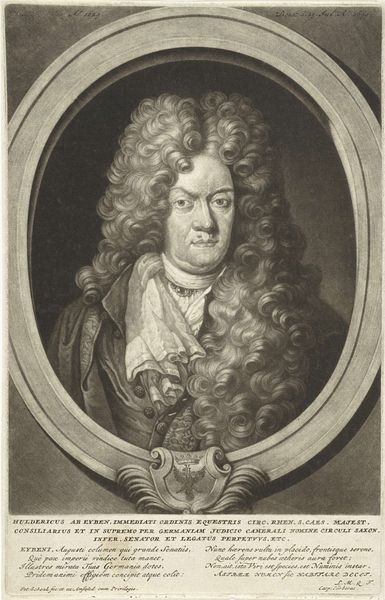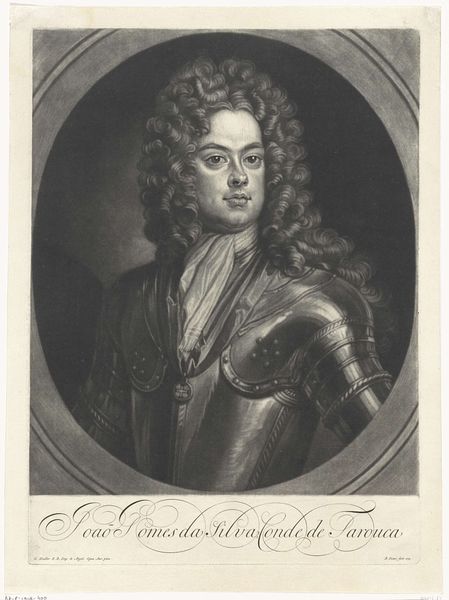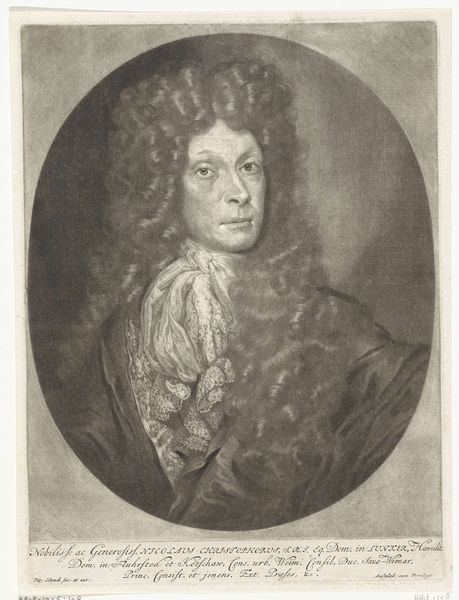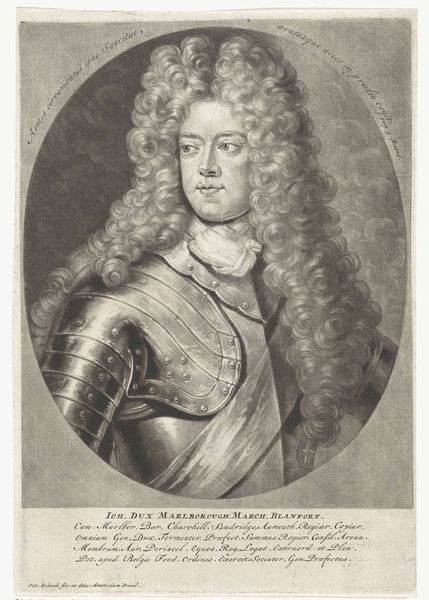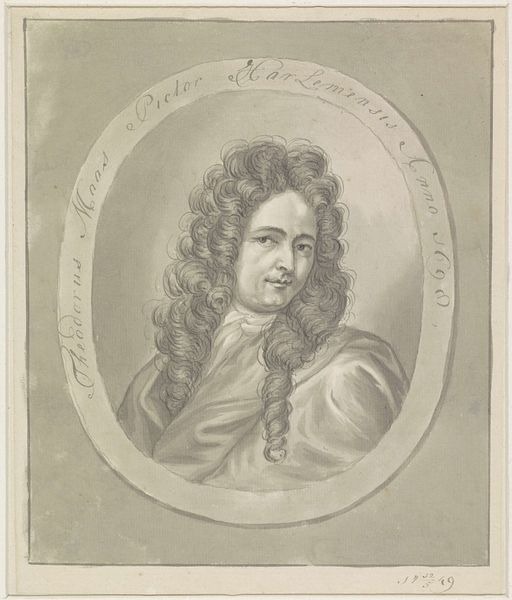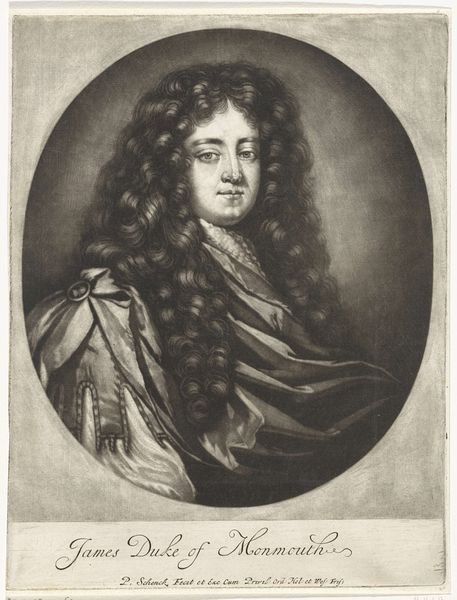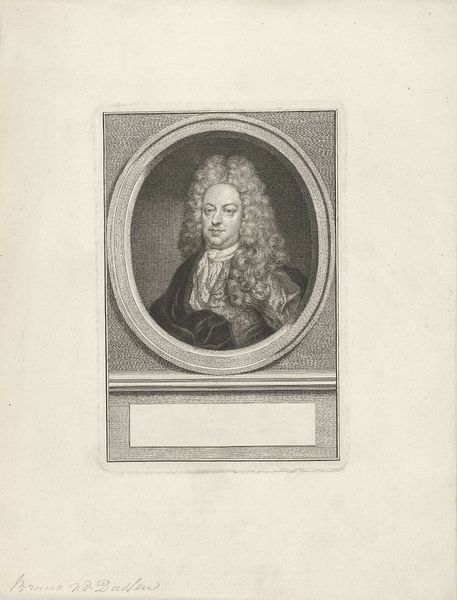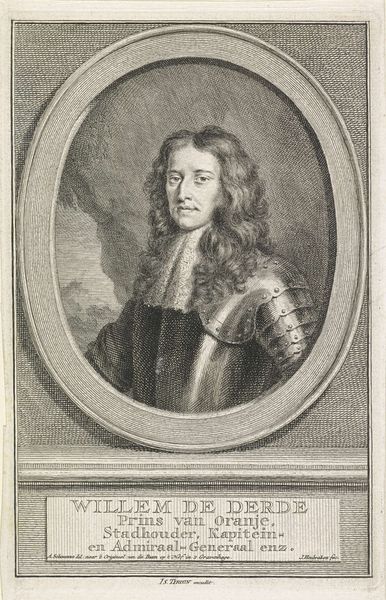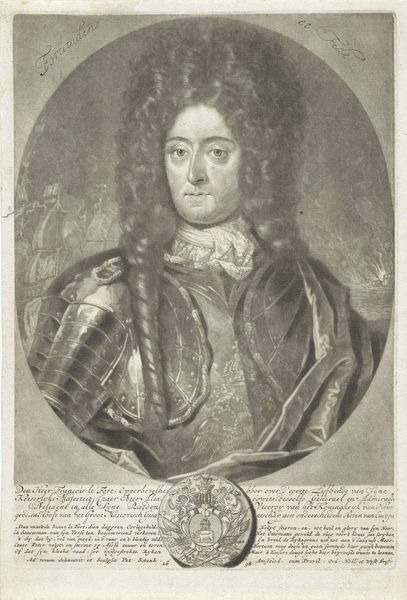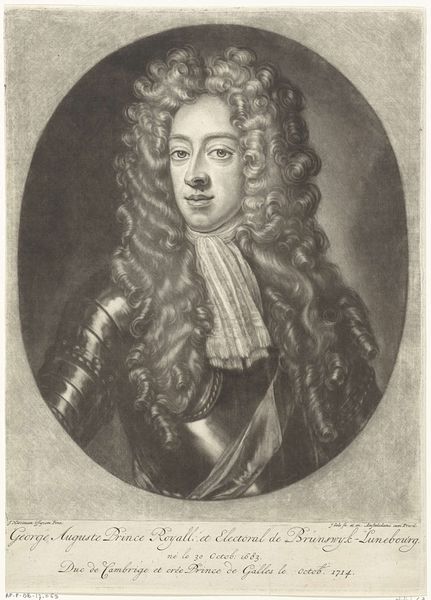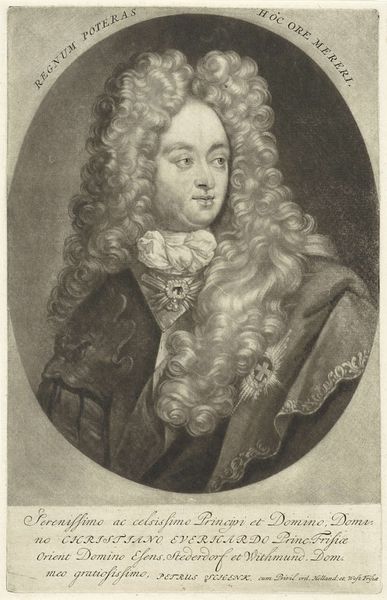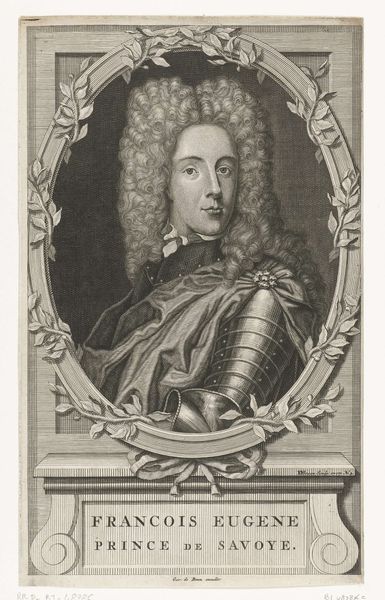
engraving
#
portrait
#
pencil drawn
#
baroque
#
old engraving style
#
white palette
#
historical photography
#
pencil drawing
#
line
#
history-painting
#
engraving
Dimensions: height 311 mm, width 233 mm
Copyright: Rijks Museum: Open Domain
This portrait of a man, possibly Nicolaas de Vicq, was made by Jan Verkolje the Elder, a Dutch artist, sometime between 1650 and 1693 using an unidentified technique. In the Dutch Golden Age, portraiture was more than just likeness; it was a statement of social standing and civic virtue. De Vicq's attire, from his elaborate wig to his ornate collar, speaks to his affluence. But beyond individual status, portraits like this played a role in shaping collective identity. The Dutch Republic, newly independent, used art to define its values and project an image of prosperity. Institutions like the Guild of Saint Luke played a crucial role, setting standards and providing a framework for artistic production. To understand this work, we need to delve into the archives, exploring the economic conditions that enabled such patronage and the social norms that dictated its form. Art is never created in a vacuum, and studying its historical context allows us to appreciate its deeper significance.
Comments
No comments
Be the first to comment and join the conversation on the ultimate creative platform.

